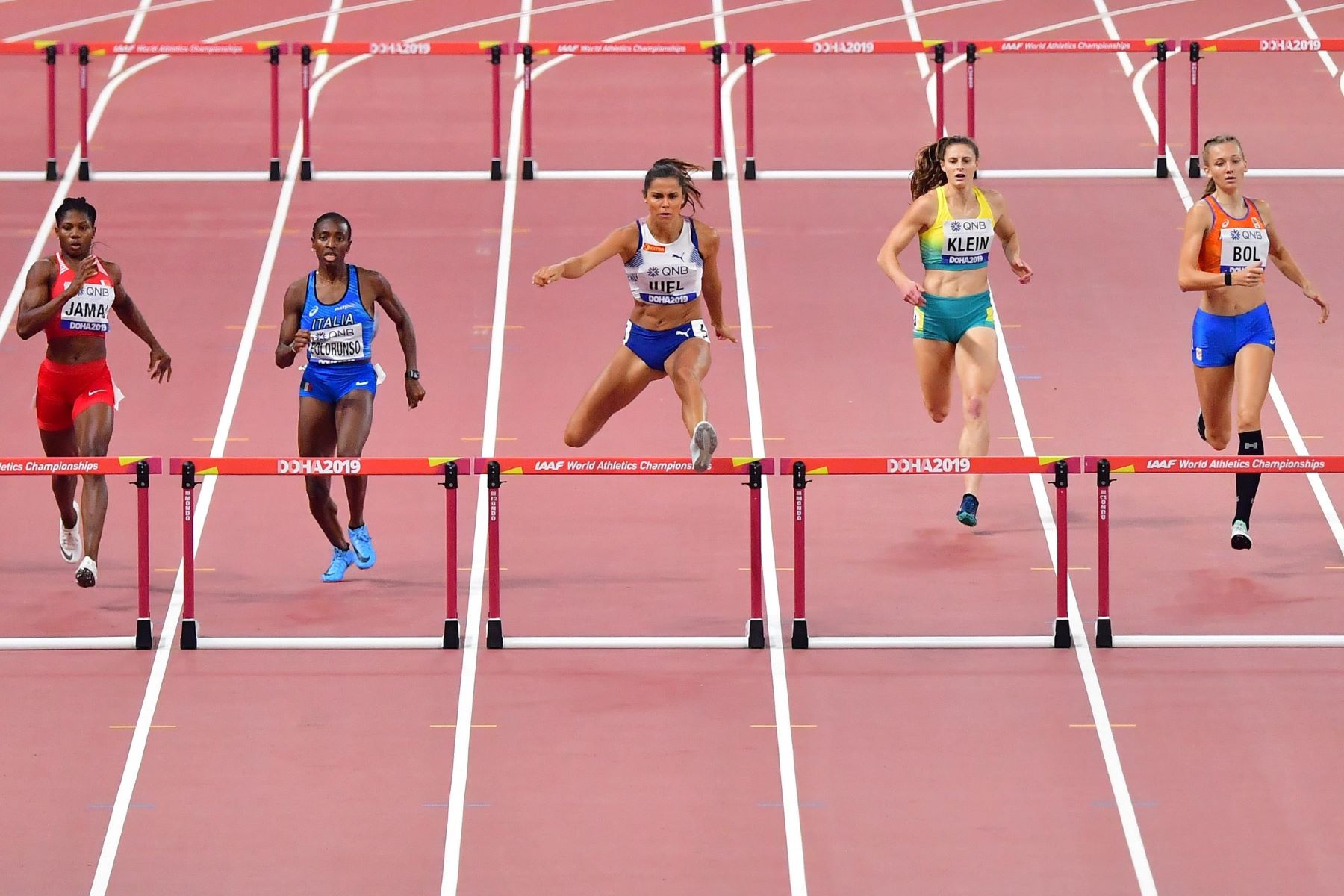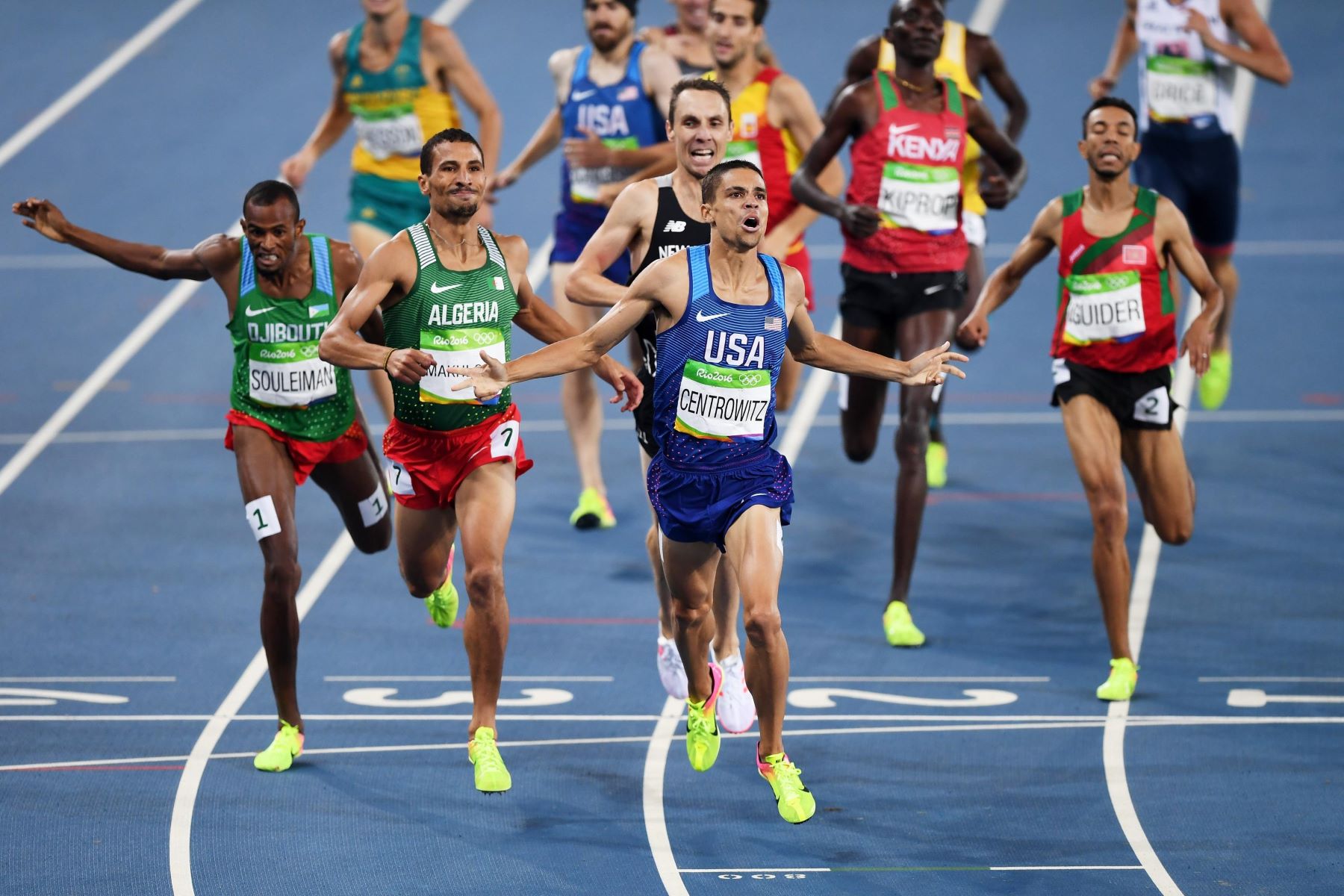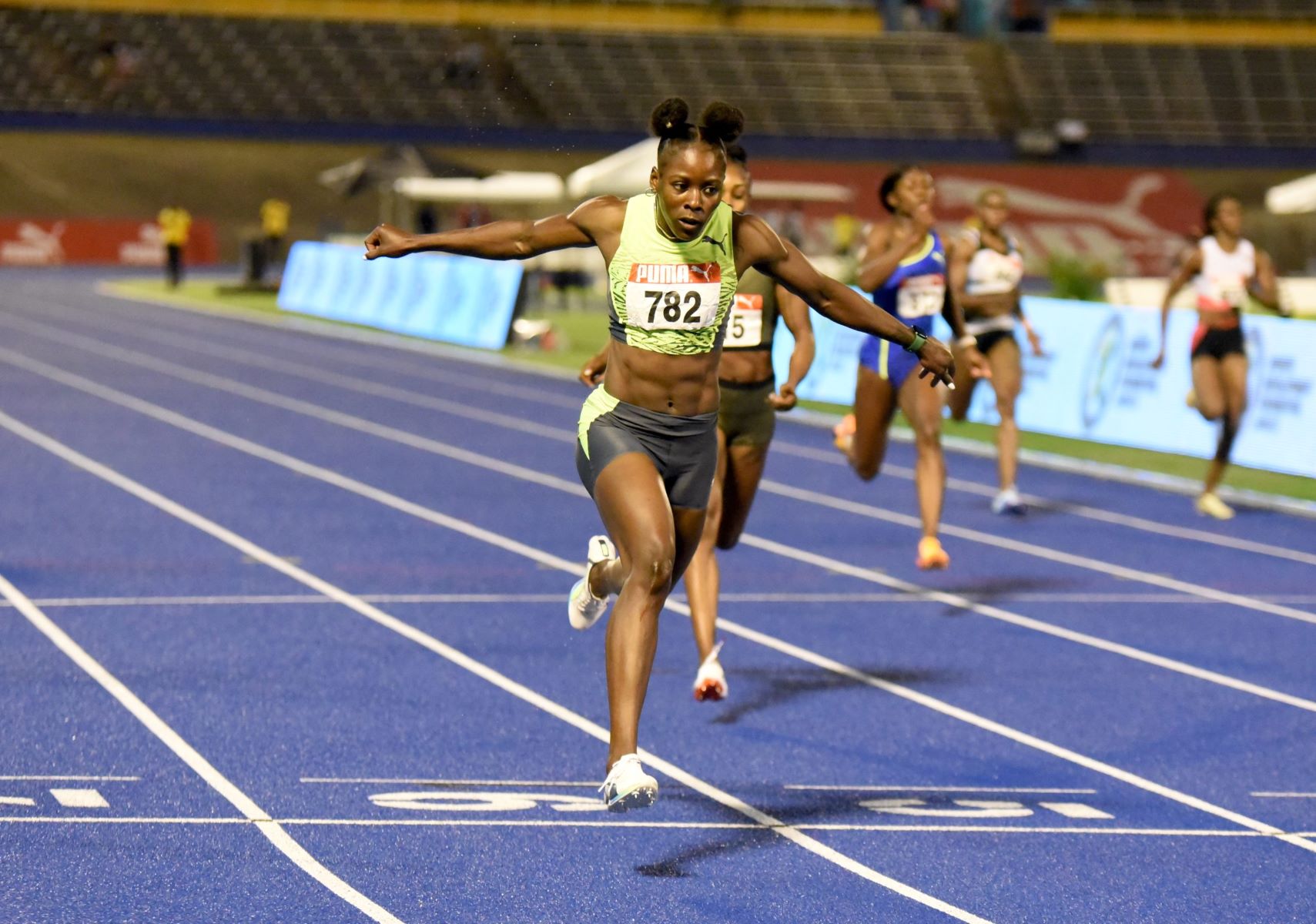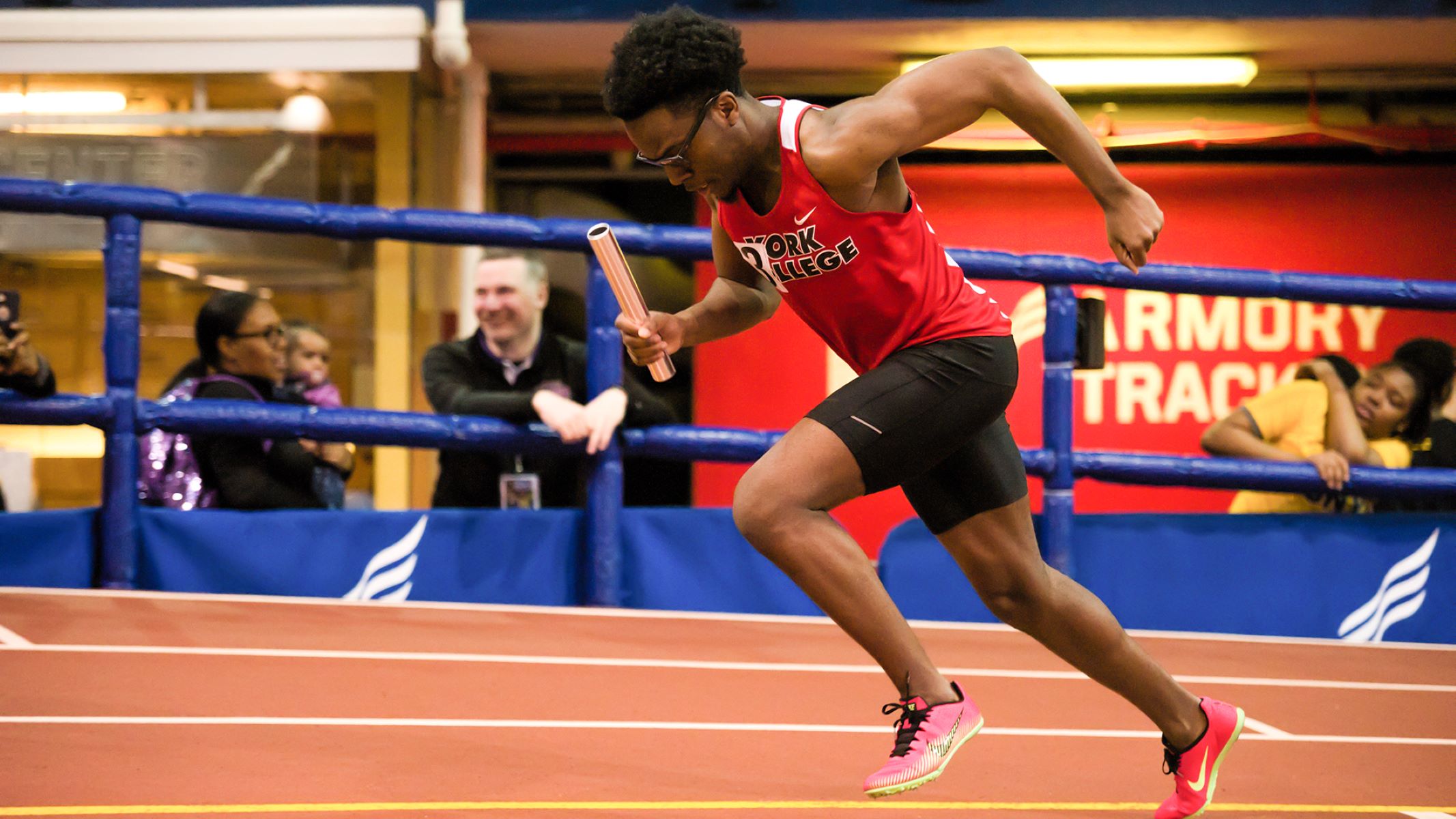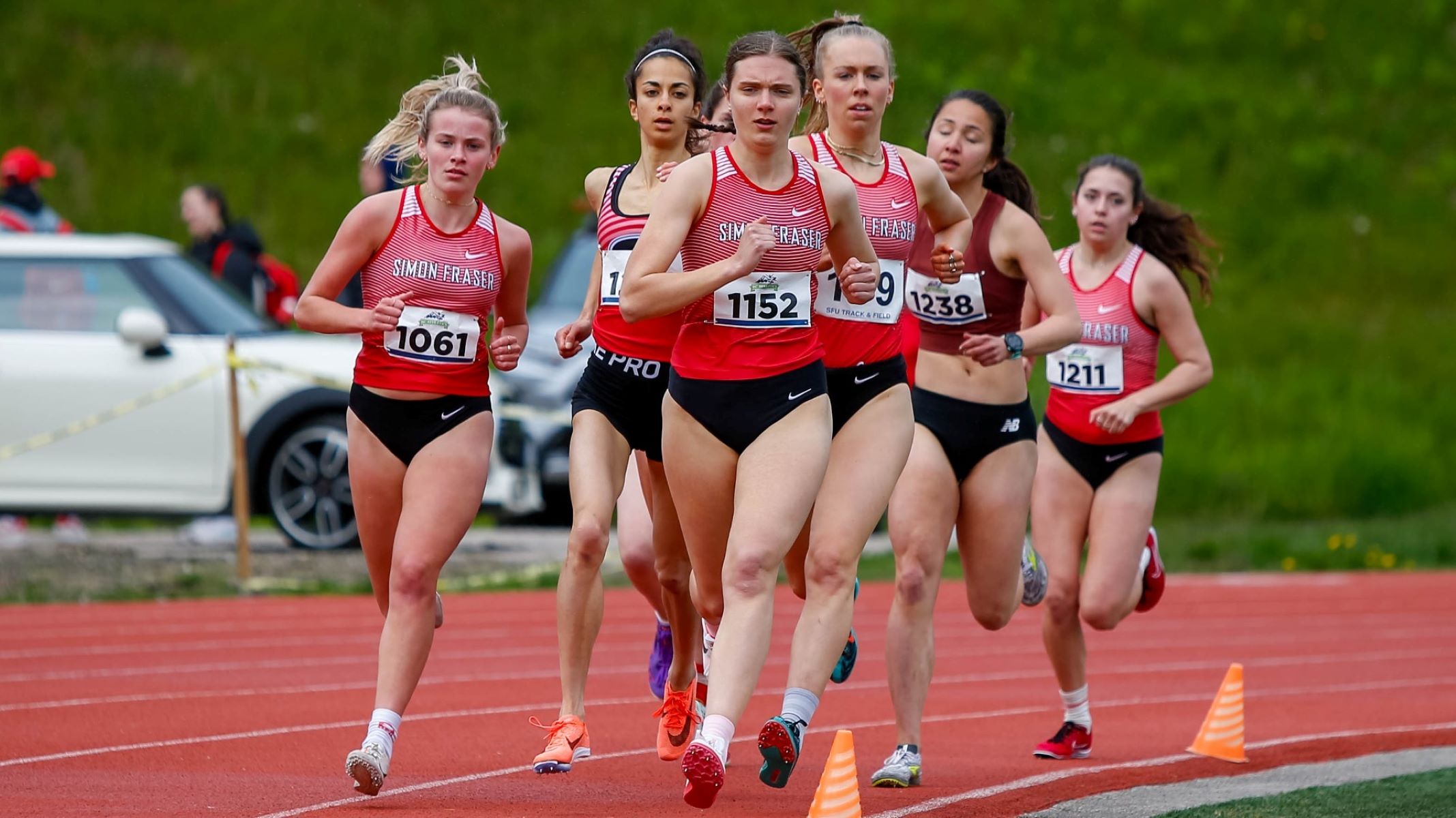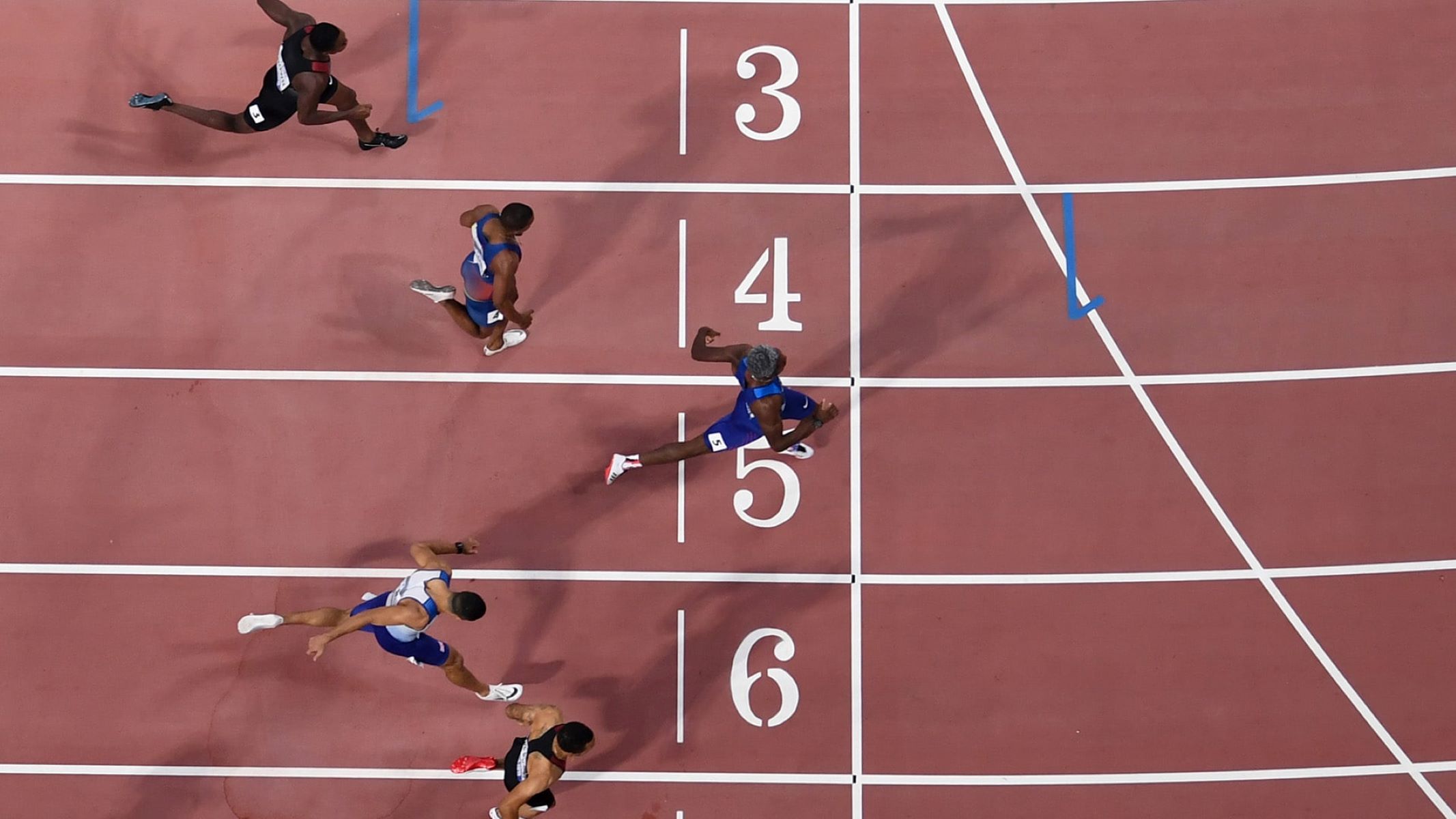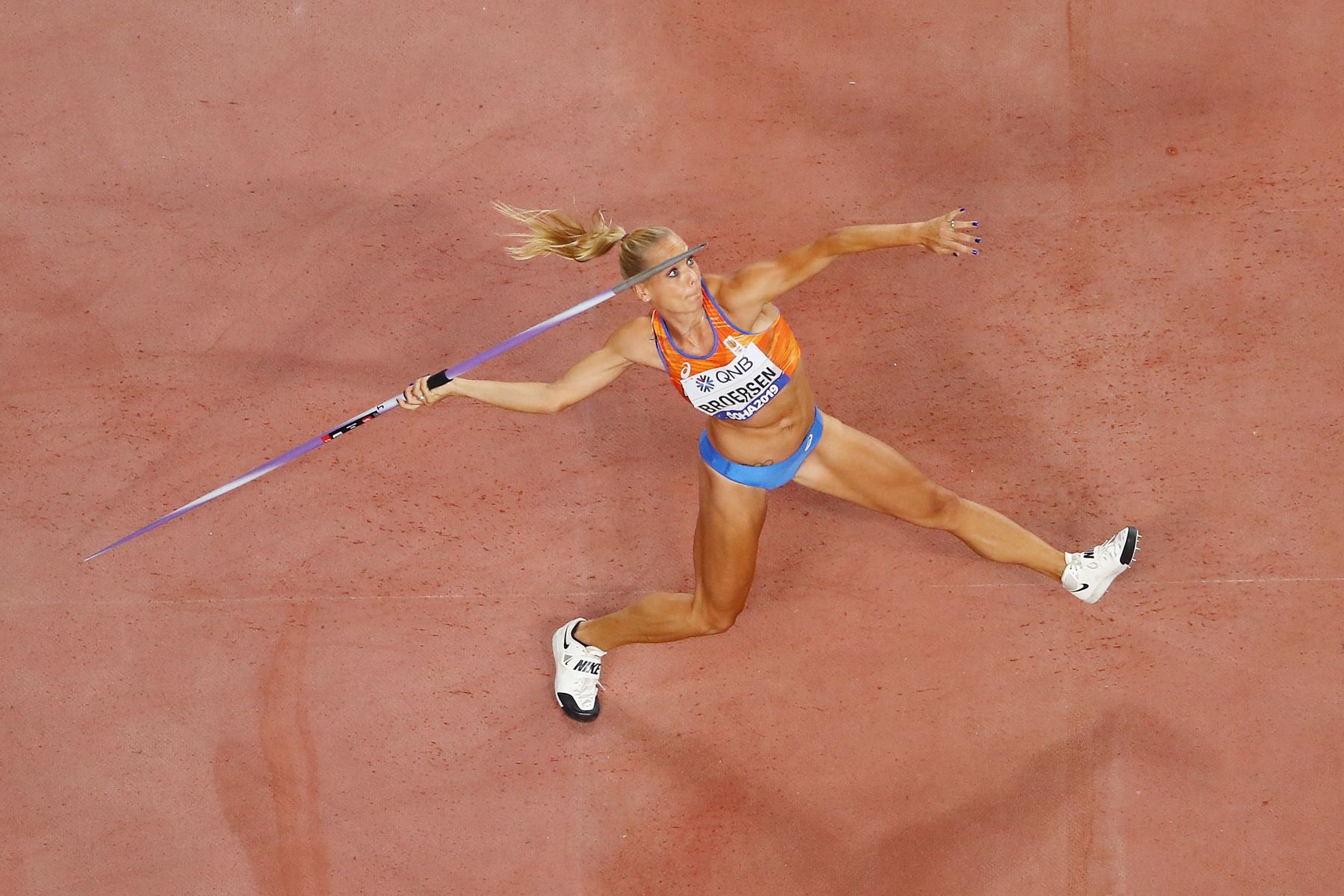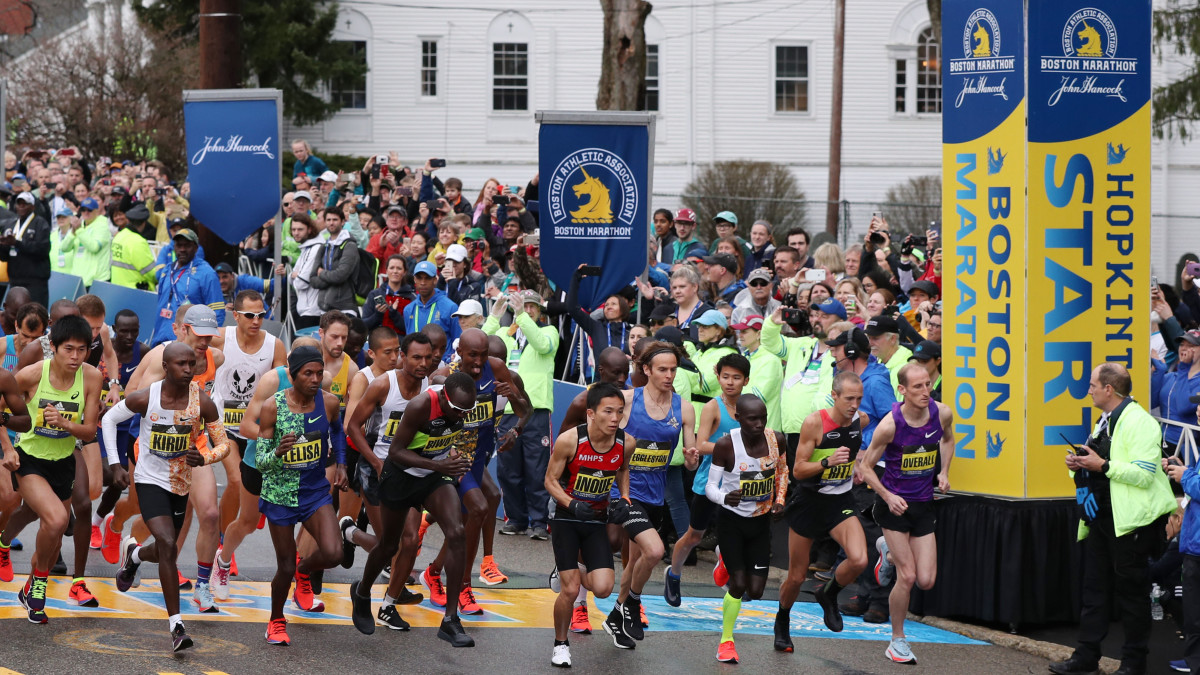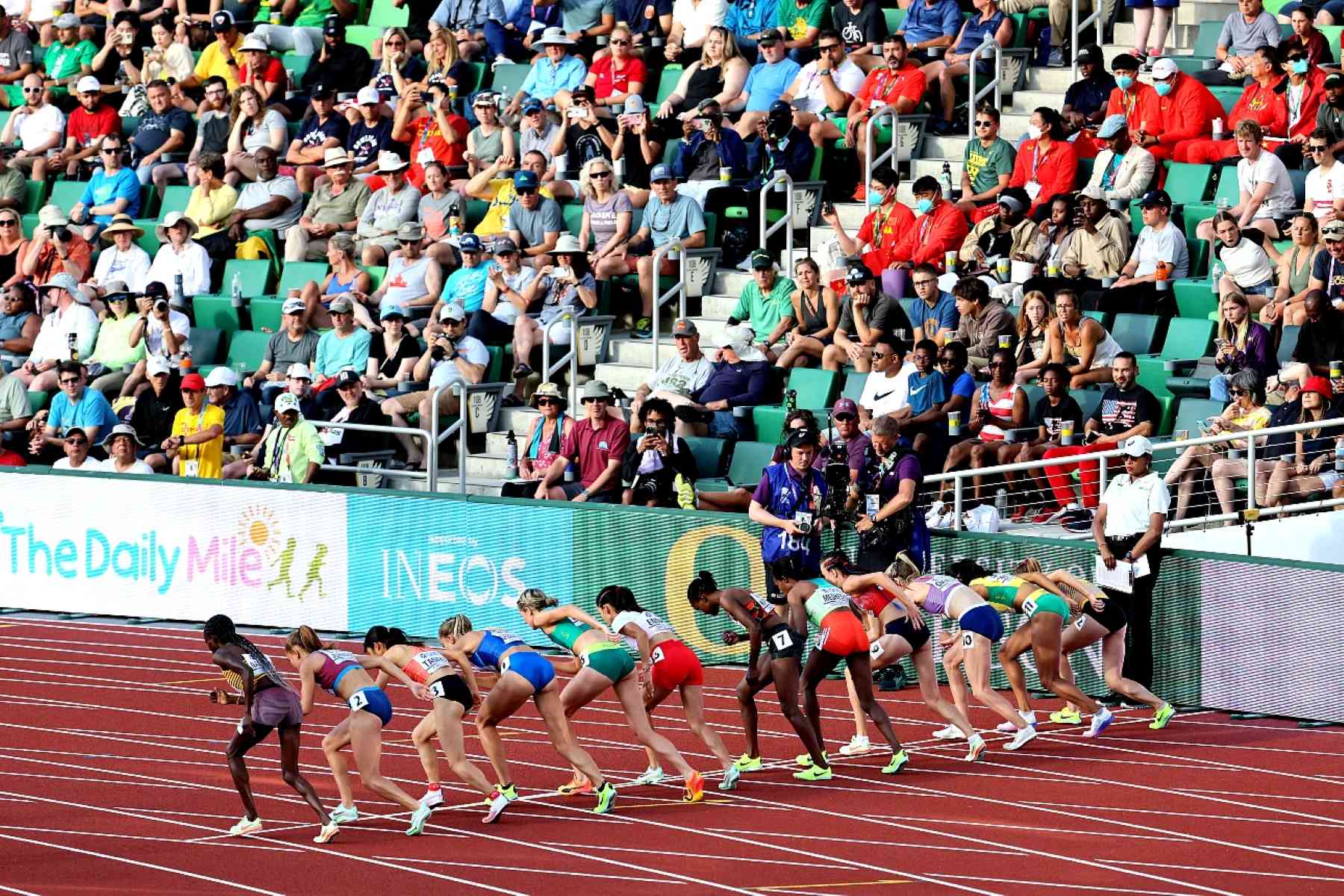Home>Misc>Featured>When Were Women Able To Do Track And Field?
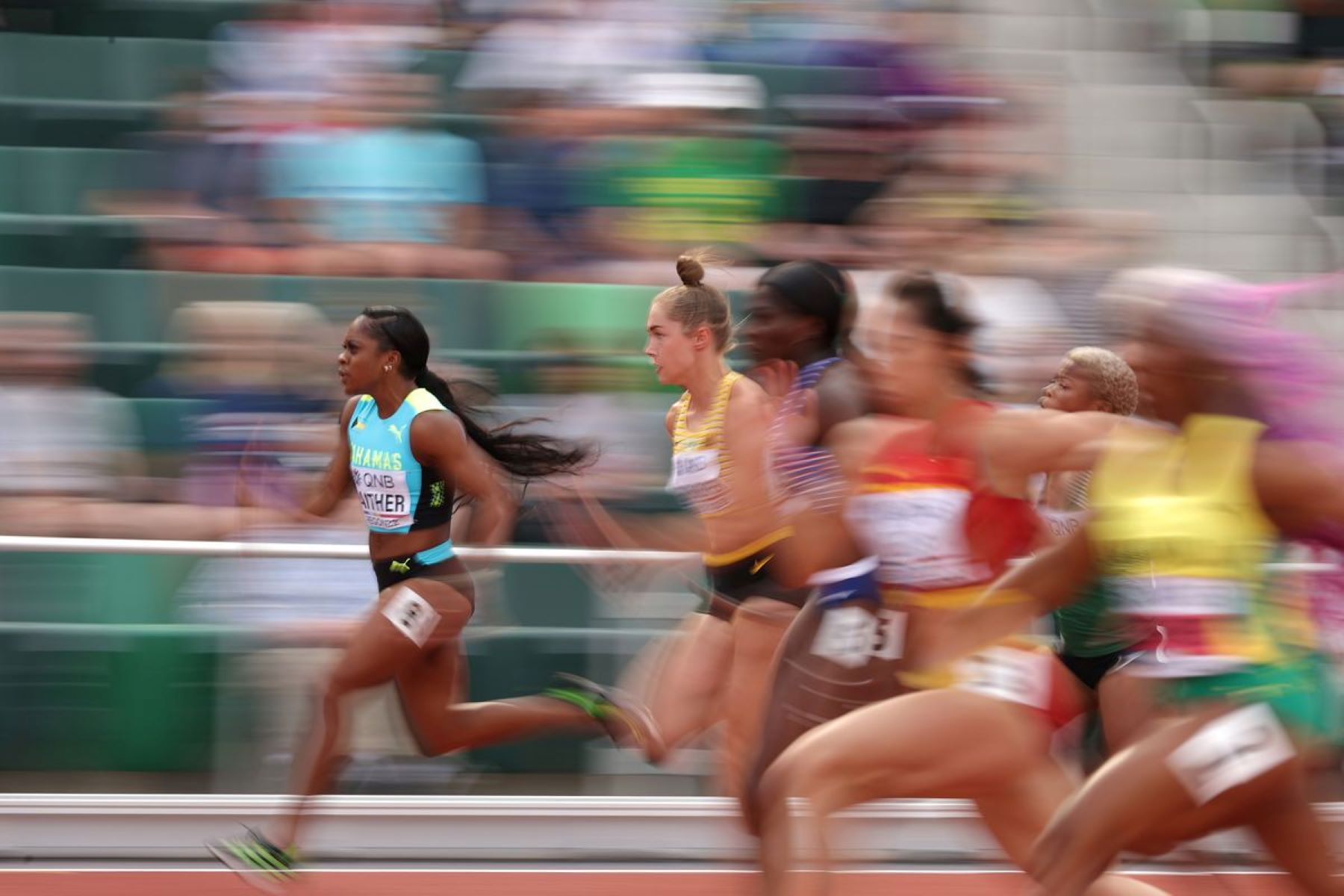

Featured
When Were Women Able To Do Track And Field?
Published: September 15, 2023
Discover the history of women's participation in track and field. From breaking barriers to becoming featured athletes, explore when women were first able to compete in this dynamic sport.
Introduction
Track and field has long been considered one of the most prestigious and revered sports in the world. The way athletes gracefully glide across the track or soar through the air captures the attention and admiration of fans worldwide. However, for many years, this exhilarating sport was dominated by men, leaving women on the sidelines with limited opportunities to compete and showcase their athletic abilities.
The battle for gender equality in track and field has been a long and arduous journey. Women have fought against societal norms, institutional barriers, and stereotypes to carve out a place for themselves in this male-dominated sport. Thankfully, their perseverance and determination have gradually paid off, resulting in significant advancements and opportunities for women athletes.
This article delves into the history of women in track and field, highlighting the hurdles they faced along the way and the milestones that mark their progress. We will explore the early struggles women encountered, such as being excluded from competitions and facing discrimination based on their gender. We will also examine the notable breakthroughs that led to the establishment of women’s track and field as a recognized and celebrated sport in its own right.
Furthermore, we will explore the impact of women in track and field on sports culture, gender equality, and the broader society. By showcasing their exceptional talent, strength, and determination, women athletes have shattered stereotypes and inspired future generations of women to pursue their athletic dreams.
Join us on this journey through time as we explore the fascinating and inspiring story of women in track and field. From overcoming societal barriers to achieving remarkable athletic feats, these women have left an indelible mark on the sport and continue to inspire us all.
Early History of Women in Track and Field
The early years of women’s track and field were marked by immense challenges and resistance from societal norms. In the late 19th century and early 20th century, women faced considerable opposition when it came to participating in track and field events. Society believed that participating in such rigorous physical activities would be detrimental to a woman’s delicate nature and could even affect her ability to bear children.
Despite these prevailing attitudes, a few bold and determined women paved the way for future generations of female athletes. In 1900, women were finally allowed to compete in the Olympic Games for the first time. However, their participation was limited to only a few events such as tennis, golf, and croquet, while track and field events were still exclusively reserved for men.
It was not until the 1928 Olympics in Amsterdam that women’s track and field events were included on the program. This marked a significant milestone in the history of women in sports, as female athletes finally had the opportunity to showcase their talent and compete on the world stage alongside their male counterparts. The inclusion of women’s events at the Olympics helped propel the popularity of women’s track and field and set the stage for further advancements in the sport.
However, despite this progress, women still faced numerous barriers in their pursuit of track and field excellence. One such barrier was the imposition of strict dress codes that hindered their performance. Women were required to wear cumbersome and restrictive clothing, including corsets and long skirts, which made it challenging to move freely and compete at their full potential. It wasn’t until the early 20th century that more practical and comfortable attire, such as shorts and sleeveless tops, was introduced for women athletes.
In addition to dress codes, women also had to battle against societal prejudices that downplayed their physical abilities. Many believed that women were not capable of achieving the same athletic prowess as men, and their achievements were often overshadowed or dismissed. This mindset locked women athletes into a cycle of marginalization and limited opportunities for growth and recognition.
Nevertheless, these early pioneers of women’s track and field persisted in their pursuit of excellence and challenged the status quo. Their determination laid the groundwork for future generations of women athletes and helped pave the way towards greater gender equality in sports. Through their courage and resilience, they shattered the stereotypes and proved that women had a rightful place in the world of track and field.
Obstacles and Challenges Faced by Women Athletes
Throughout history, women athletes have encountered numerous obstacles and challenges in their pursuit of success in track and field. These hurdles have ranged from social and cultural biases to institutional barriers that have hindered their growth and progress in the sport.
One of the main challenges faced by women athletes is the persistent stereotype that women are not as physically capable as men. This stereotype has led to a lack of support and resources for female athletes, including limited opportunities for competition, inadequate training facilities, and lower financial support compared to their male counterparts. The perception that women’s sports are less exciting or entertaining has also resulted in a lack of media coverage and sponsorships for women athletes in track and field.
Gender discrimination and unequal treatment have been prevalent within sports institutions as well. Historically, women athletes have faced disparities in prize money, endorsement deals, and access to coaching and training resources. This has created a significant disadvantage for women in terms of their ability to develop their skills and compete at the highest level.
In addition to external obstacles, women athletes have also had to navigate the challenges posed by their own bodies and physiological differences. Menstruation, pregnancy, and the postpartum period can impact a woman’s training, performance, and overall career trajectory in track and field. Balancing the demands of training and competition with the physical changes and responsibilities that come with being a woman can be a formidable challenge.
Sexual harassment and abuse have also been distressingly prevalent in the world of track and field. Women athletes have had to confront instances of harassment, assault, and exploitation by coaches, officials, and fellow athletes. The silence and tolerance surrounding such misconduct have often created a hostile environment that further deters women from participating in the sport or speaking out about their experiences.
Despite these daunting challenges, women athletes have displayed incredible resilience and determination. They have used their platforms to advocate for equality, challenge discriminatory practices, and create opportunities for future generations of women in track and field. Through collective efforts, there has been a gradual shift towards addressing these obstacles and fostering a more inclusive and supportive environment for women athletes.
As we continue to strive for gender equality in sports, it is essential to recognize and address these obstacles and challenges faced by women athletes. By breaking down barriers, providing equal opportunities, and fostering a culture of respect and support, we can create a brighter future for women in track and field and unleash the full potential of their athletic abilities.
Milestones and Breakthroughs in Women’s Track and Field
Over the years, women in track and field have achieved significant milestones and breakthroughs, fighting against stereotypes and societal barriers to establish themselves as formidable athletes. These milestones have not only shaped the history of women’s track and field but also paved the way for future generations of women athletes.
One of the most notable milestones in women’s track and field is the establishment of the International Association of Athletics Federations (IAAF) Women’s World Championships in 1983. This event provided female athletes with a platform to showcase their skills and compete at the highest level. The inaugural championships, held in Helsinki, Finland, marked a significant step towards gender equality and recognition for women in the sport.
Another groundbreaking moment came in 1960 when Wilma Rudolph, an African-American sprinter, made history by becoming the first American woman to win three gold medals in track and field at a single Olympic Games. Rudolph’s achievements not only showcased her exceptional talent but also shattered barriers of race and gender, serving as an inspiration for future generations of women athletes.
In recent years, women in track and field have continued to rewrite records and push boundaries. In 2016, South Africa’s Caster Semenya won her second Olympic gold medal in the women’s 800 meters, despite facing controversy and scrutiny regarding her natural hormone levels. Semenya’s resilience and perseverance in the face of adversity highlights the ongoing challenges that women athletes still encounter.
Advancements in technology and training methods have also played a crucial role in the progress of women’s track and field. Women athletes now have access to state-of-the-art equipment, scientific training techniques, and personalized coaching, enabling them to reach new heights in their performance. These advancements have contributed to the breaking of numerous world records by women athletes in various track and field events.
Furthermore, the increased visibility and recognition of women in track and field have paved the way for improved financial support and endorsement opportunities. Prominent women athletes such as Serena Williams, Allyson Felix, and Shelly-Ann Fraser-Pryce have become global icons, attracting sponsors and media attention to the sport and inspiring young girls to pursue their athletic dreams.
More recently, there has been a growing movement towards gender equality in track and field, with organizations working to address disparities in prize money, media coverage, and resources for women athletes. Initiatives such as the “Equal Pay for Equal Play” campaign have helped shed light on the inequalities that persist and push for a more equitable sporting landscape.
Although significant progress has been made, there is still work to be done in ensuring gender equality in all aspects of track and field. Continued efforts to challenge stereotypes, provide equal opportunities, and promote inclusivity are crucial to fostering an environment where women athletes can thrive and excel.
Women’s Track and Field in the Modern Era
The modern era has seen remarkable advancements for women in track and field, as they continue to break barriers and redefine what is possible in the sport. Women athletes have emerged as a force to be reckoned with, captivating audiences around the world with their incredible performances and inspiring stories of triumph.
One significant development in recent years is the increasing recognition and support for women’s track and field. Major sporting events, such as the Olympics and World Championships, now provide equal opportunities and prize money for both male and female athletes. This shift towards equality has fostered a more level playing field, empowering women athletes to compete and excel at the highest level of the sport.
Advancements in technology, training methods, and scientific research have also contributed to the success of women in track and field. Female athletes now have access to cutting-edge equipment, specialized training programs, and a better understanding of nutrition and sports science. These advancements have not only improved overall performance but also have helped prevent injuries and optimize athletic potential.
The rise of social media and digital platforms has played a significant role in increasing the visibility and exposure of women athletes. Through personal narratives, behind-the-scenes glimpses, and direct engagement with fans, women athletes have been able to share their stories, inspire others, and create a supportive community. Social media platforms have also made it easier for fans to connect with their favorite athletes, further enhancing the impact and influence of women in track and field.
Another prominent development in the modern era is the breaking of long-standing records by women athletes. From sprinting to jumping, throwing to middle-distance running, women have proven time and again that they are capable of achieving extraordinary feats. Usain Bolt’s dominance in the men’s 100 meters may have garnered worldwide attention, but it was Florence Griffith Joyner’s record-setting performance in the women’s 100 meters that captivated the world and still stands to this day.
Women’s track and field has also witnessed incredible displays of athleticism through the emergence of multi-event competitions. Heptathlon and decathlon events showcase the versatility and endurance of women athletes, requiring them to excel in a variety of disciplines, including sprinting, jumping, throwing, and distance running. These events have become popular highlights of major championships, with impressive performances from athletes like Carolina Kluft, Jessica Ennis-Hill, and Nafissatou Thiam.
Furthermore, women in track and field have become powerful advocates for gender equality and social change. Athletes like Allyson Felix and Caster Semenya have used their platforms to voice their support for equal pay, diversity, and inclusion not just in sports but in society as a whole. Their activism has sparked important conversations and paved the way for progress in addressing gender disparities.
As we look to the future, women’s track and field will continue to evolve and inspire. The growth of the sport relies on continued efforts to challenge stereotypes, provide equal opportunities, and create a supportive environment that nurtures the talents and ambitions of women athletes. With each passing year, women in track and field demonstrate that they are forces to be reckoned with, capable of achieving greatness and inspiring generations to come.
Impact of Women in Track and Field
Women in track and field have had a profound impact not only on the sport itself but also on society as a whole. Their achievements and contributions have shattered stereotypes, challenged gender norms, and inspired generations of women to pursue their athletic dreams. The impact of women in track and field can be seen in various aspects of sports culture, gender equality, and the broader society.
First and foremost, women athletes in track and field have played a pivotal role in changing societal perceptions of women’s physical abilities. Through their exceptional performances, they have demonstrated that women are just as capable, powerful, and competitive as men. They have shattered long-held beliefs that painted women as delicate and fragile, proving that female athletes possess remarkable strength, speed, and agility.
Women in track and field have also been at the forefront of advocating for gender equality in sports. Their successes have brought attention to the disparities and limitations faced by women athletes, leading to conversations and reforms aimed at leveling the playing field. This has resulted in increased funding, resources, and opportunities for women in track and field, as well as advancements in policies that promote equal pay and treatment in sports.
Furthermore, the presence of women in track and field has had a profound effect on inspiring young girls and challenging traditional gender roles. Female athletes serve as powerful role models, showing young girls that they can pursue their passions and achieve greatness in traditionally male-dominated fields. The impact extends beyond the realm of sports, encouraging girls to break barriers, challenge stereotypes, and strive for success in all areas of life.
In addition to inspiring future generations, women in track and field have made significant contributions to the broader society. By using their platforms, they have been vocal advocates for social change, promoting inclusivity, diversity, and equal opportunities for all. They have become ambassadors for various causes, raising awareness and addressing issues such as racial inequality, gender discrimination, and body positivity.
The impact of women in track and field is not limited to the athletes themselves. Coaches, administrators, and support staff have also played crucial roles in shaping the sport and advocating for equality. By providing mentorship, guidance, and leadership, women in coaching and administrative positions have created pathways for success and fostered a more inclusive and supportive sporting environment.
Overall, women in track and field have left an indelible mark on the sport, inspiring generations of athletes and paving the way for progress and equality. Their achievements have gone beyond the track and field, influencing social attitudes, challenging norms, and empowering women to strive for greatness. The continued progress and success of women in track and field will undoubtedly contribute to a more equitable and inclusive future for all.
Conclusion
The journey of women in track and field is a testament to the power of determination, resilience, and the relentless pursuit of gender equality. From the early struggles and exclusion to the remarkable milestones and breakthroughs, women athletes have defied societal expectations and proven their incredible athleticism.
The obstacles and challenges faced by women in track and field have highlighted the need for systemic change and a shift in cultural attitudes. Despite these hurdles, women athletes have made significant strides towards equality, championing for equal opportunities, recognition, and support in the sport.
Throughout history, women in track and field have shattered stereotypes, shattered records, and inspired future generations. Their impact extends far beyond the realm of athletics, as they have become powerful advocates for social change and gender equality in society.
As we move forward, it is crucial to continue challenging gender biases and providing equal opportunities for women in track and field. By fostering supportive environments, providing resources, and amplifying the voices of female athletes, we can create a future where women in track and field are seen as equals and their accomplishments celebrated just as fervently as their male counterparts.
The legacy of women in track and field serves as an inspiration for all, reminding us of the determination, strength, and resilience that lies within each individual. It is a testament to the power of breaking boundaries and pushing beyond perceived limitations.
Let us celebrate the incredible achievements of women in track and field, embrace their impact on sports culture, gender equality, and society, and continue to champion their rightful place in the world of athletics. The journey of women in track and field is far from over, and together we can create a future where all athletes are given the same opportunities and recognition, regardless of gender.
